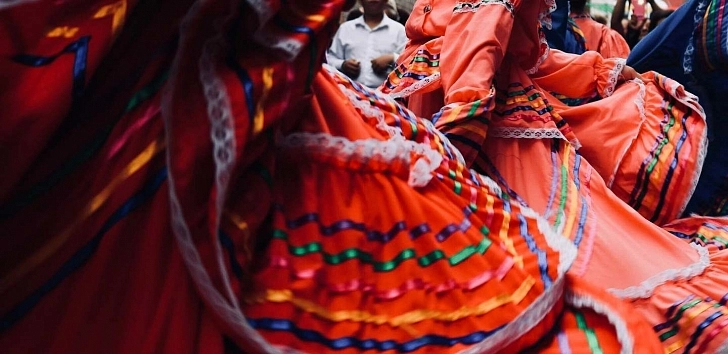Mexico for gourmets: where to taste the best national cuisine
Mexico is the sixth most attractive tourist destination in the world. People usually go there to see the Mayan pyramids and relax on the beaches. But if it is not possible to swim and visit historical monuments from a distance, it is quite possible to get to know the cuisine and traditional flavors.
Most of the tourists in Mexico are traditionally from the USA. The relations between neighboring countries are constantly changing from neutral to very bad, and now because of problems with illegal emigration and drug trafficking everything is difficult here, but this does not affect the popularity of Mexico. During Prohibition, Americans used to go to border towns to party.
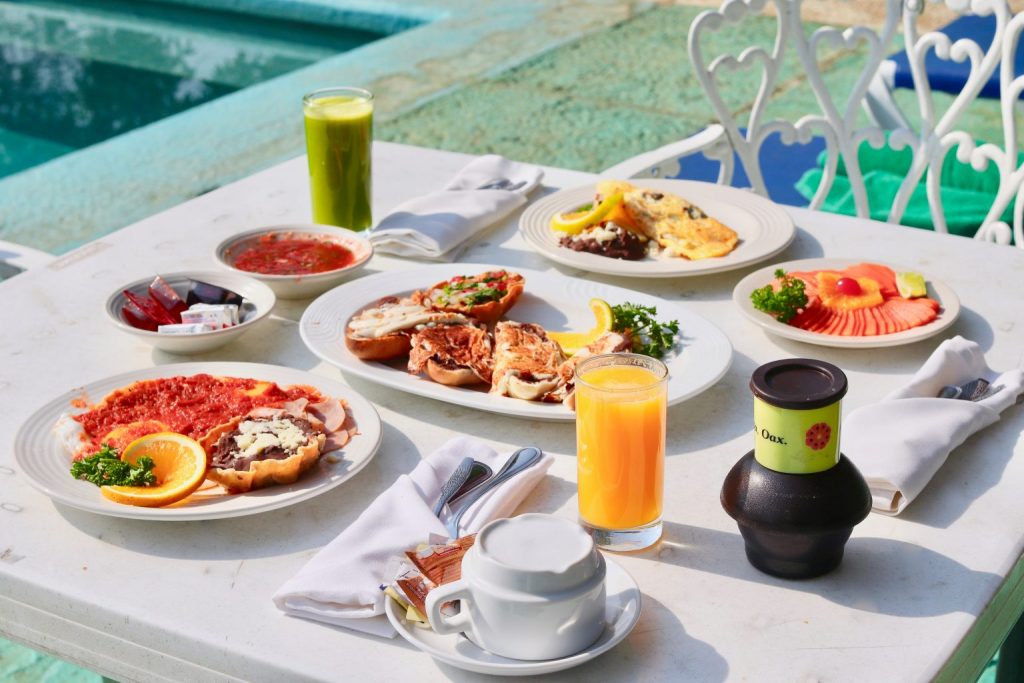
The slang term “Mexican breakfast” comes from Tijuana in the 1920s: a cigarette and coffee or a glass of water supposedly helped Californians on a bender from a bad hangover. Mexico was for many years a haven for those who had difficulties with the authorities in their homeland (see “Escape from Shawshank”), and today it’s an obvious vacation spot.
But increasingly, gastronomy connoisseurs from all over the world are coming here to travel. The reason is the indescribable richness of Mexican cuisine, which is not at all reduced to tacos and fajitas (which, by the way, can have a hundred regional varieties).
In 2019, Enrique Olvera’s Pujol restaurant became the Best in North America in The World 50 Best Restaurants ranking, beating out all of its U.S. competitors, and that alone speaks volumes about how well-developed Mexico’s cuisine is. And any cuisine: without a strong national gastronomic culture it is almost impossible to achieve such results in haute cuisine.
Gastronomic tourism is one of the main points of efforts of tourist organizations in Mexico, that is why many special routes have already been laid in the country. Besides the obvious “tequila road” in the state of Jalisco, there is also the “mole road” in Oaxaca and neighboring states, the “cheese and wine trail” in Bernal and Queretaro and the “coffee road” in Tapachula and Chiapas.
Indian magic
Traveling through Mexico is a journey through time: here you can stumble upon habits and customs that originated in the pre-Columbian era and are still alive today. Many are rooted in religious rituals that are observed as strictly as they were centuries ago.
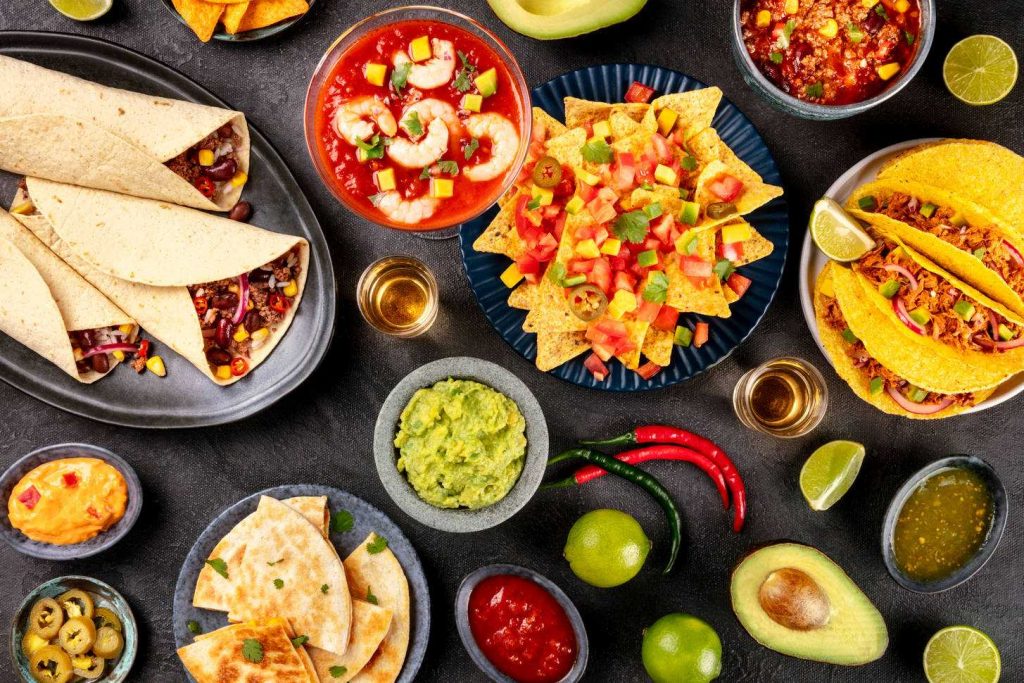
The most prominent example is the Day of the Dead, coming from the Indians. In big cities, it has become as fun slightly infernal holiday as Halloween, of which it is an analog: everywhere baked goods in the form of colorful skulls and skeletons and carnivals with “scary” costumes. But in the villages the Day of the Dead is still celebrated as it was by the Incas: with offerings at the graves, offering ritual tamales to the spirits of the dead and colorful memorial “altars”.
In the realm of gastronomy, much the same thing happens: in Indian villages, corn is pounded in stone stupas, just as it was a thousand years ago. In Mexico City, Guadalajara, Oaxaca and Acapulco, dishes from all cuisines of the world are prepared and French or Italian recipes are easily adapted to local products and flavors.
The country’s historical heritage is usually thought of as generalized-Indian. The local tribes, from the Maya to the diminutive Miche and Tlapanec, have their own recipes and culinary traditions. This has been one of the reasons for the stunning variety of regional cuisines.
The cuisine of Chihuahua differs from what is cooked in Oaxaca as markedly as Piedmontese cuisine differs from Sicilian cuisine. Even universally recognized symbols of Mexican cuisine, such as tacos or quesadillas, are prepared differently everywhere, with different fillings, different dough compositions, etc.
In Mexico City, as in any capital, you can find restaurants of all regional cuisines, but it is better to study them “in the place of residence”. Therefore, let’s tell you about the peculiarities of Mexican cuisine of tourist states.
4 dishes of Oaxaca
The state of Oaxaca and the capital of the same name. In the latter is located distillery Montelobos – one of the most fashionable producers of craft mescal.
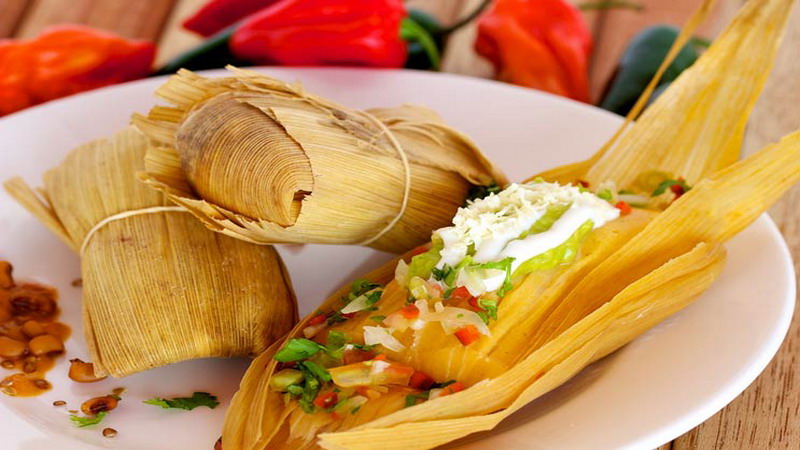
Tlayuda. It’s often referred to as “Mexican pizza,” though the only thing they have in common is the form factor: tortillas with filling. It’s a crispy tortilla on which mole sauce, meat, cheese, and various vegetables are spread.
Tamales. Corn dough with a meat or sweet filling, steamed in corn leaves.
Mole. The most popular sauce recipe, whose history comes from the Indians, is called mole poblano, that is, from neighboring Puebla. But there are hundreds of variations of mole in Puebla and Oaxaca. A mole is a paste of different kinds of chili peppers, garlic, tomatoes, onions, bananas, pork fat, sesame seeds and spices. The set of ingredients varies, and the mole itself can be dark (negro, with chocolate), red, green, yellow, and whatever else you want. The mole with pumpkin seeds is called pipian.
Whitlacoochee. Corn infected with a specific fungus. It looks peculiar with its grayish-blue deformed kernels, but the fungus gives the corn a unique flavor for which uitlacoche is sometimes called “Mexican truffle.” In its pure form, like the truffle, uitlacoche is not eaten, but added to various dishes.
5 dishes of Puebla
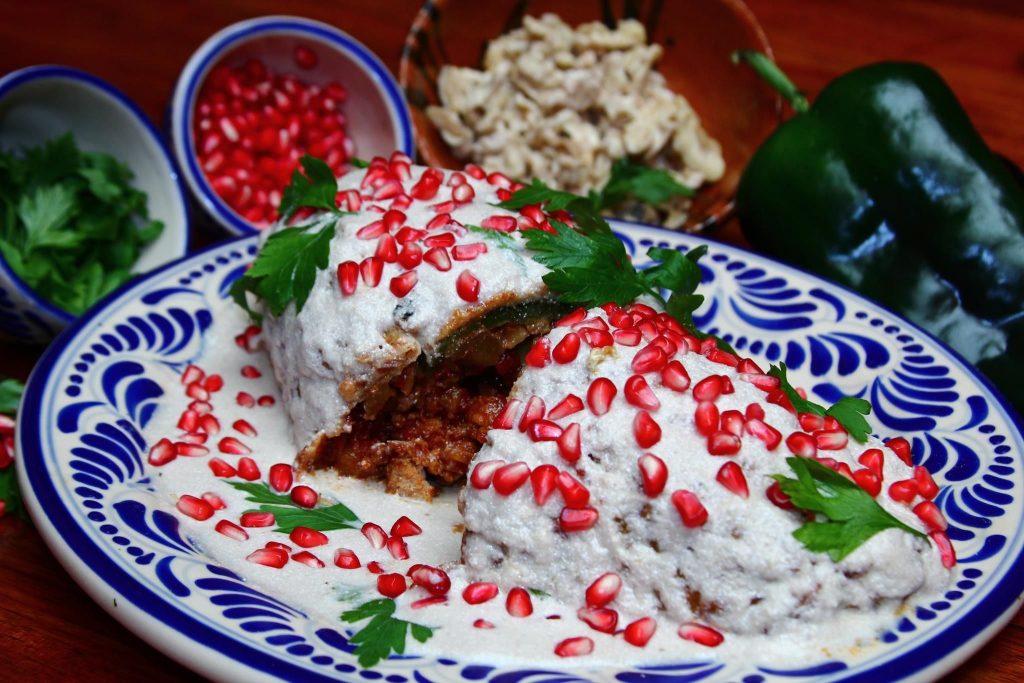
Chiles en nogada. Stuffed poblano peppers in walnut sauce with pomegranate seeds.
Mexican caviar. Ant eggs, usually served as an addition to filling tacos or tamales.
Arabic tacos. The result of the interaction of local traditions with the habits of natives of Iraq, who came to Mexico in the early XX century. In our region, a similar dish is called shawarma. Paradoxically, today the most popular “Arabian tacos” are with pork.
Chalupas. Local version of tacos with chicken or beef, sauce and fresh onions.
Jamoncillo. One of the most popular sweets throughout the country is a kind of spiced cane sugar taffy.
7 dishes of the Yucatán
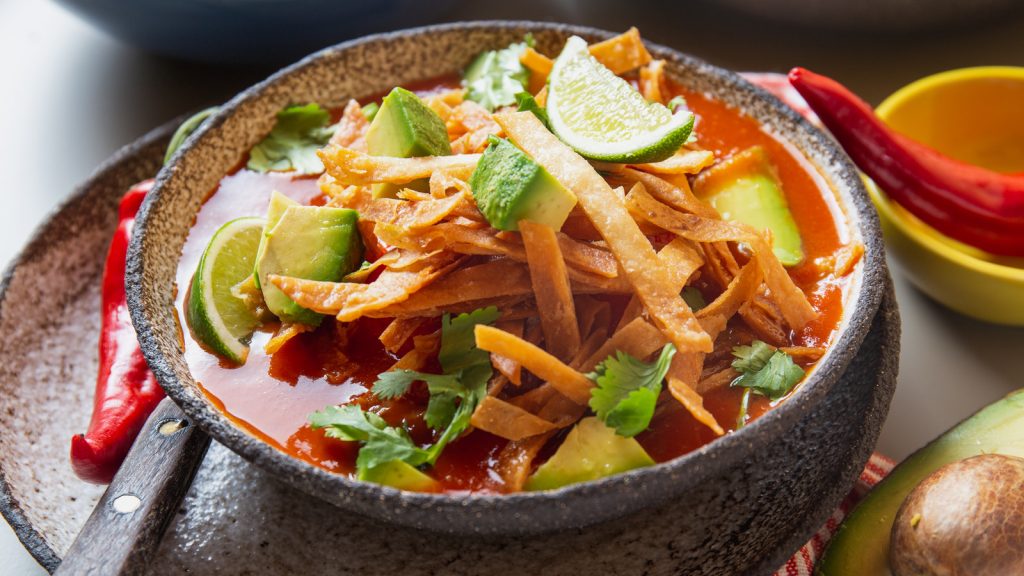
Cochinita pibil. Pig roasted in an earth oven with a spicy sauce.
Pok chuk. Pork in orange marinade.
Panuchos. A local version of tacos, fried tortillas with beans, tomatoes, lettuce and avocado.
Salbutes. Crispy corn tortillas with liquid stew with beans and hard-boiled eggs.
Stuffed Cheese. One of the strangest dishes in the Yucatán, a head of gouda-like cheese from which the center has been removed and stuffed with minced meat and spices.
Papadsules. A relative of enchiladas (rolled tortillas with chicken and cheese) with a sauce made from pumpkin seeds and the local spicy herb epasote.
Lime soup. A winter staple: hot chicken soup with avocado, to which lime is added straight up in quarters.
Taco
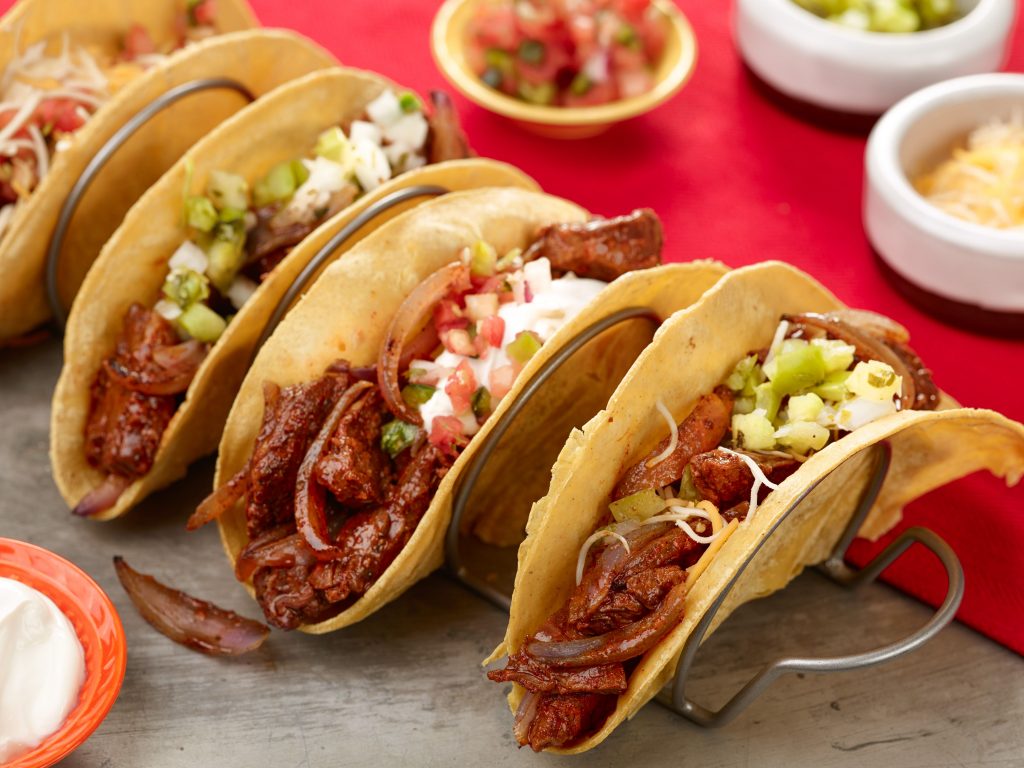
Taco deserves a special mention, because it is the most famous dish of Mexican cuisine, but it became famous in the “Tex-Mex” version, which developed in the southern states of the United States based on the recipes of Mexican cooks who came to work there en masse in the first half of the XX century. Tacos are made differently in Mexico, and you shouldn’t expect a Taco Bell approach from local taquerias. Compare:
Features of a Mexican taco:
- Corn tortilla
- The tortilla is often fried in the fat from the filling
- The tortilla is always soft
- Mexican cilantro and onions are sprinkled on top.
- The sauce is quite spicy and cooked on the spot.
- Pork or beef
- The meat for the filling is stewed, grilled or deep-fried.
International Tex-Mex Taco:
- Corn or wheat tortilla
- The tortilla is not fried
- The tortillas can be both soft and crispy.
- The top is garnished with lettuce, tomatoes and grated cheese
- Sauce is not very spicy and is ready
- Pork or chicken
- Stuffing meat baked or grilled on a regular grill
What and where to eat in Mexico
If you do decide to travel to Mexico when the opportunity arises and the setting is right, we recommend keeping this list of places – from stellar restaurants to equally great shops – on hand.
Mexico City haute cuisine

Pujol
Tennyson 133, Polanco IV Secc.
Best restaurant in North America according to The World 50 Best Restaurants 2019. Included in all of the world’s top restaurant rankings. Presents creatively reimagined cuisines of Oaxaca and Puebla.
Enrique Oliveira is a very talented chef and has come up with many dishes that have been replicated around the world, but his hometown restaurant is a definite must-try for the “mother mole,” with which he deliberately puts himself at a disadvantage for the sake of promoting national traditions.
The mole at Pujol is made by themselves, adding a new batch to the previous one, so the current version is about 20 years old. And few things in the world can match the richness and complexity of flavor of a velvety, perfectly cooked molé that intertwines peppery, chocolate, earthy and nutty notes.
Quintonil
Av. Isaac Newton 55, Polanco IV Secc
The restaurant is named after a Mexican spicy herb, and it speaks to the main focus of its cuisine – local fruits, vegetables and herbs. Chef Jorge Vallejo works extensively with different types of chili peppers, Mexico’s unique fruit sapota (mamey), portulaca, Mexican cilantro, local mushrooms, and edible insects.
La Docena
Av. Álvaro Obregón 31, Roma Nte., Cuauhtémoc
The chain’s first restaurant in Guadalajara is considered the best in the country for offering fresh oysters and seafood, and a few years ago it got two “little brothers” in the capital (one has already been included in Latin America’s 50 Best Restaurants). Chef Thomas Bermudez is known for his perfect choice of ingredients and his love of New Orleans cuisine. Wagyu beef from Durango is also on the menu.
Markets
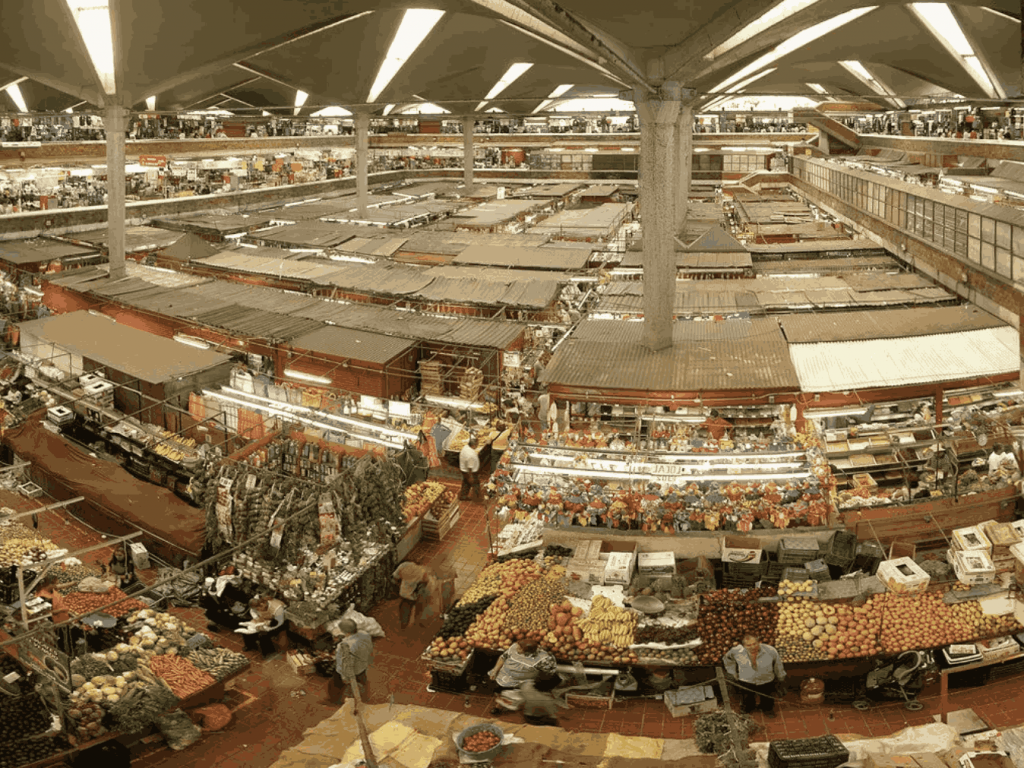
Mercado de San Juan
Edible souvenirs are easiest to buy in Mexico City at the San Juan Market. Most Mexican specialties are sold here, from fried grasshoppers to uitlacoche.
Mercado Roma and Mercado Roma Coyoacan.
Two trendy markets under one name (sometimes Mexico City resembles Moscow a little too much), with the second one opening soon in the lovely Coyoacan neighborhood. At the old one, in the Roma neighborhood, La Clande serves Mexican breakfasts, including chilaquiles, a mix of fried tortilla pieces with mole, cream, cheese and avocado. Also in Roma Market is Butcher & Sons, where Mexicans say they make the best burgers in the world.
Mercado de Comida Coyoacán.
Besides the trendy one, Coyoacán also has a regular market. Going there is worth it for the quesadillas with uitlacoche. Most places put sour cream in the dishes with uitlacoche (Mexicans add it almost everywhere), but it obscures its delicate flavor. In the market, however, they put sour cream only if you ask for it.
7 great places with street food in Mexico City

Los Cocuyos
Calle de Bolívar 57, Centro Histórico de la Cdad. de México
A legendary taqueria, a natural hole-in-the-wall. Here you can meet solid men in suits, policemen, workers from the neighboring construction site, and chefs from the best restaurants in the city. Five people who try the whole menu (about 10 kinds of tacos), will settle for 50 dollars. No alcohol, naturally, and it’s open until 5 a.m.
Los Machetes de Amparito
Calle Heroes 192, Guerrero
The first place that started serving giant quesadillas 60-70 cm long in the 1960s. The most expensive combination of fillings costs about $4. Inside can be pork rinds, sausages, pumpkin flowers, cheese, etc. There’s always a line to get in, on weekends it takes about an hour, on weekdays it moves faster.
Fonda Margarita
Adolfo Prieto 1364 B
Anthony Bourdain’s famed spot for an authentic Mexican breakfast, in this case frijoles, that is, refried beans and eggs. The place is wildly popular with locals, so you can get in an hour-long line at six in the morning, or you can get in in twenty minutes, no one can predict.
Mariscos Orizaba
Calle Liverpool 97
Here we try tostadas (sandwiches) with seafood, the ones with shrimp are especially good.
Tamales Luis Ángel
Castilla, Ahorro Postal, Benito Juárez.
The best tamales in town are sold from a cart on the corner of Castilla and Aorro Postal streets. The tamales are usually at breakfast time, so the peak time is early in the morning, with a smaller crowd closer to 10 o’clock. The range is huge and changes at times, be sure to try the sweet versions.
Pastelería Ideal and Churrería El Moro
The best places to experience traditional Mexican desserts. They are usually too sweet for Europeans, but you can have one once. Churrería is open 24 hours a day.
La Casa de Toño
Several chain restaurants where those who overindulged last night flock. What in the Caucasus is khash, in Mexico is posole, a thick soup with corn and meat. A large portion costs about $2, and there’s no better value for money hangover cure.
Street food rules

- You can’t buy drinks on the streets, no matter how tempting all those freshly squeezed juices may seem in the heat. You shouldn’t drink tap water in Mexico City outside of five-star hotels with their own filters, and it’s better to buy it from a supermarket or chain café.
- Sample only heat-treated foods.
- Choose carts and food stands according to how clean they look, how many people are in line (the more, the better, although you will have to wait) and those where there are two vendors (one takes the money, the other cooks).
- Don’t try more than 3-4 unfamiliar dishes in a row, or even the most hardy stomach can react in unforeseen ways.
- When the vendor is about to add sauce and looks at you questioningly, you should tell him poquito (a little), as the spiciness may be too much for the European palate.
Immersing yourself in the world of Mexican cuisine will provide you with an unforgettable experience and a sense of the authenticity of this culture through its rich and varied flavors. From regional specialties to street snacks, Mexico welcomes you with its culinary treasures at every turn. Don’t forget that traveling begins with preparation, including relocation. That’s where our moving company will help you – a reliable partner in organizing your move, ensuring comfort and safety at every stage of your journey.
Contact us in any way:
Telephone: (954) 773-9667
E-mail: abs@absoluteinc.org


